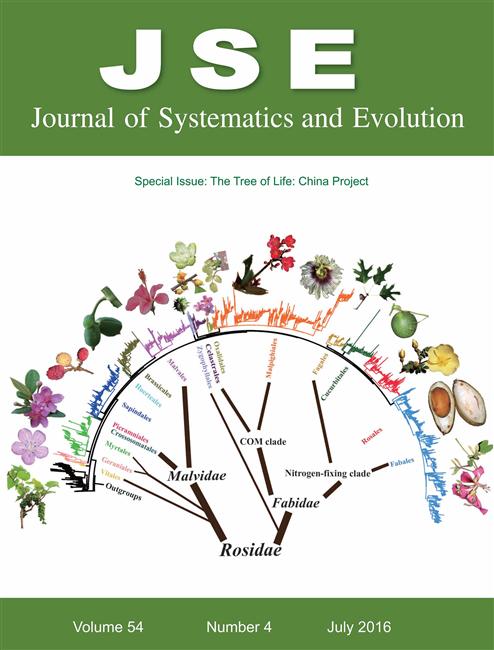Zhi-Duan Chen, Tuo Yang, Li Lin, Li-Min Lu, Hong-Lei Li, Miao Sun, Bing Liu, Min Chen, Yan-Ting Niu, Jian-Fei Ye, Zhi-Yong Cao, Hong-Mei Liu, Xiao-Ming Wang, Wei Wang, Jing-Bo Zhang, Zhen Meng, Wei Cao, Jian-Hui Li, Sheng-Dan Wu, Hui-Ling Zhao, Zhong-Jian Liu, Zhi-Yuan Du, Qing-Feng Wang, Jing Guo, Xin-Xin Tan, Jun-Xia Su, Lin-Jing Zhang, Lei-Lei Yang, Yi-Ying Liao, Ming-He Li, Guo-Qiang Zhang, Shih-Wen Chung, Jian Zhang, Kun-Li Xiang, Rui-Qi Li, Douglas E. Soltis, Pamela S. Soltis, Shi-Liang Zhou, Jin-Hua Ran, Xiao-Quan Wang, Xiao-Hua Jin, You-Sheng Chen, Tian-Gang Gao, Jian-Hua Li, Shou-Zhou Zhang, An-Ming Lu, China Phylogeny Consortium
We reconstructed a phylogenetic tree of Chinese vascular plants (Tracheophyta) using sequences of the chloroplast genes atpB, matK, ndhF, and rbcL and mitochondrial matR. We produced a matrix comprising 6098 species and including 13?695 DNA sequences, of which 1803 were newly generated. Our taxonomic sampling spanned 3114 genera representing 323 families of Chinese vascular plants, covering more than 93% of all genera known from China. The comprehensive large phylogeny supports most relationships among and within families recognized by recent molecular phylogenetic studies for lycophytes, ferns (monilophytes), gymnosperms, and angiosperms. For angiosperms, most families in Angiosperm Phylogeny Group IV are supported as monophyletic, except for a paraphyletic Dipterocarpaceae and Santalaceae. The infrafamilial relationships of several large families and monophyly of some large genera are well supported by our dense taxonomic sampling. Our results showed that two species of Eberhardtia are sister to a clade formed by all other taxa of Sapotaceae, except Sarcosperma. We have made our phylogeny of Chinese vascular plants publically available for the creation of subtrees via SoTree (http://www.darwintree.cn/flora/index.shtml), an automated phylogeny assembly tool for ecologists.

